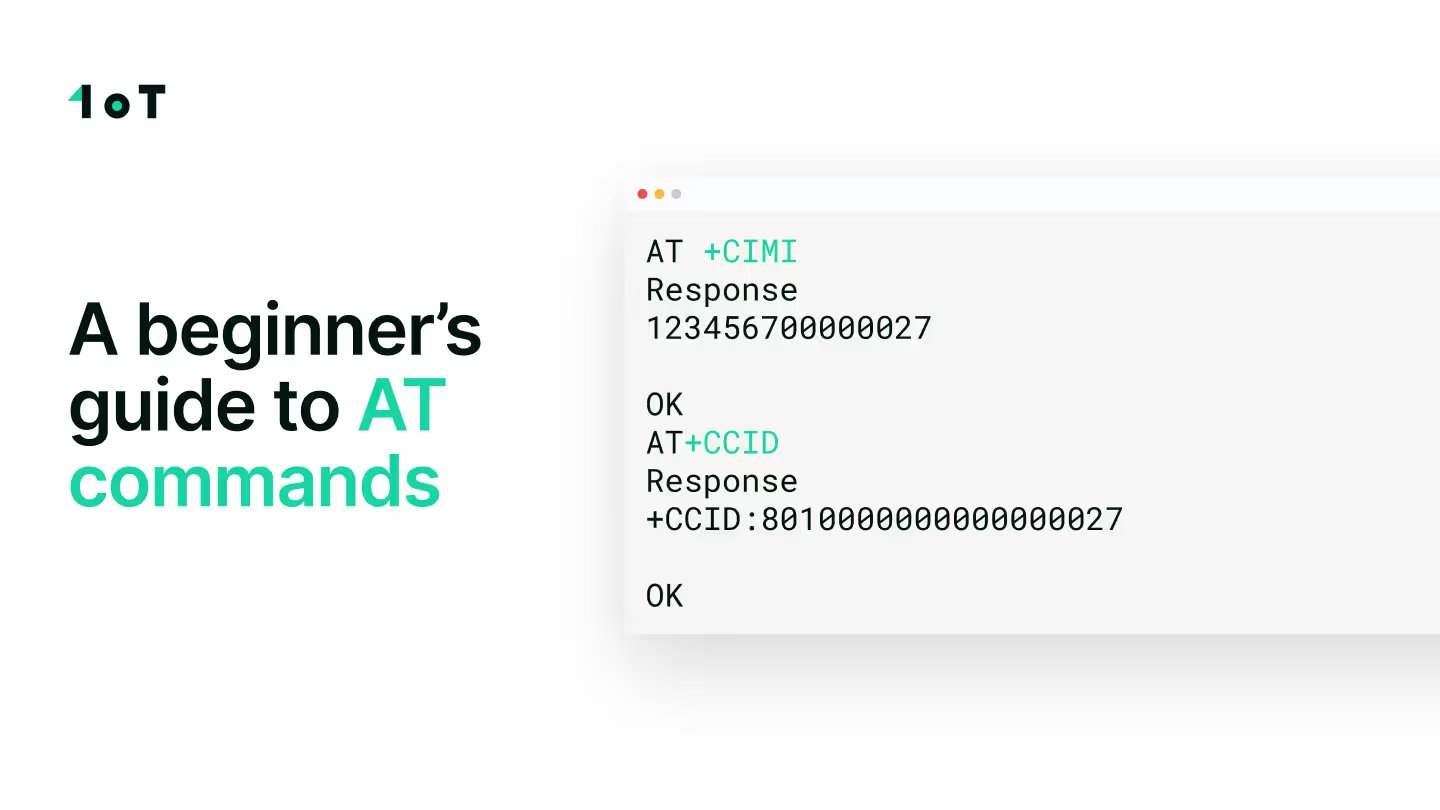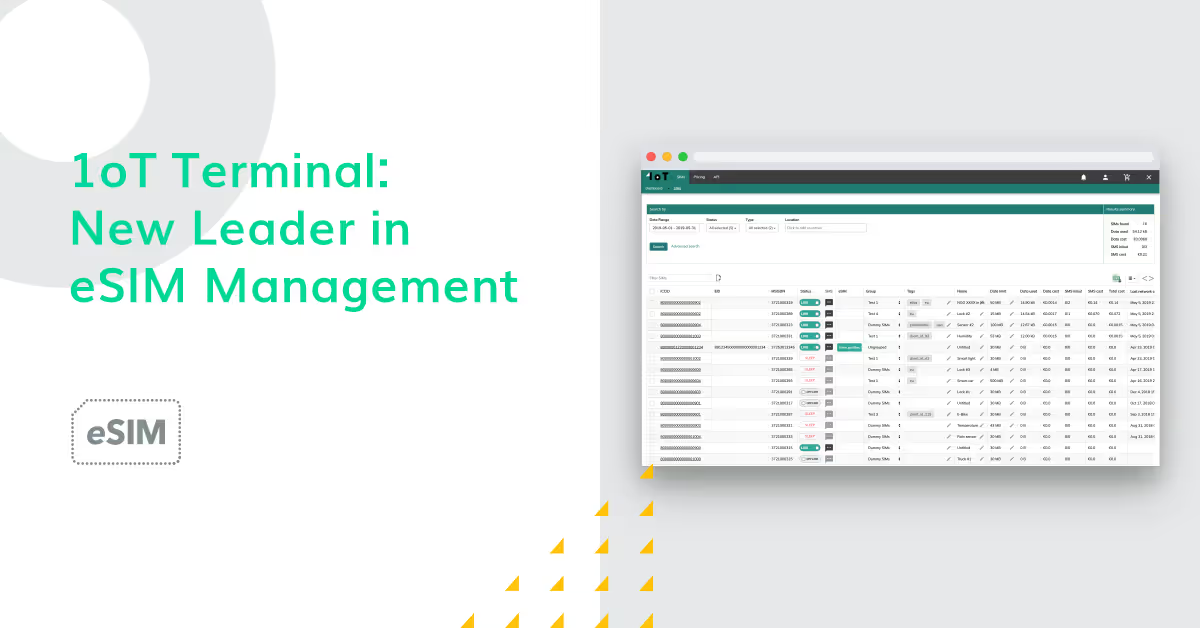Differences between SIM types - which SIM to choose?

Cellular connectivity is the most reliable and widespread connectivity method for IoT (Internet of Things) and M2M (Machine-to-Machine) devices.
In order to connect a device to a carrier, it needs a Subscriber Identity Module, or as most people call it, SIM. The size and the type of SIM you need to select depends on the device's purpose, functionality, and space available to host a SIM card or chip.
We've also written about the different numbers on SIM cards.
There are mainly two different SIM technologies and four form factors used today.
SIM card (UICC)
This SIM card comes in four form factors or sizes - 1FF, 2FF, 3FF and 4FF. However, the 1FF option is not in use anymore for modern devices. All other types, from 2FF to 4FF, are still dominating the cellular connectivity world.
These SIMs are widely accessible, relatively easy to operate with, and well supported by hardware components.
Chip SIM (MFF2 UICC)
There is another option, an embedded SIM called MFF2 UICC (chip SIM). From a technical perspective, it works the same way as a regular SIM card, but is vacuum-sealed and can be soldered directly onto the circuit board during manufacturing.
This makes the chip SIM a perfect option for devices that are located outdoors (can be sealed and protected from corrosion), are in constant motion (shocks), or require a longer lifecycle.
Additionally, chip SIMs are permanently installed in the device and cannot be removed for misuse, making it more secure.
Yet, it's important to note that the carrier profiles are preloaded onto MFF2 form factor SIMs by the SIM vendor, unless the MFF2 SIM in question has the capabilities of an eSIM.

eSIM (eUICC)
eSIM can be referred to as the future of SIM cards, using a completely different technology.
If you're confused about what the term "eSIM" actually refers to, you are not alone. Despite many articles referring to eSIM as a SIM form factor of an embedded chip, eSIM capabilities are actually available for SIM all form factors: 2FF (Mini), 3FF (Micro), 4FF (Nano), MFF2 (the "embedded" or "chip" SIM - the one that many mistakenly refer to solely as an eSIM), and recently iSIM (SoC - integrated SIM).
eSIM is regarded as the future of SIM technology and is already deployed in newer consumer smart devices and, now with 1oT's eSIM solution, also in IoT and M2M devices.
While maintaining the same form factors, an eSIM solution follows a new standard, which makes switching between mobile carriers much easier thanks to Over The Air(OTA) provisioning.
If you want to dive deeper in the world of eSIM, read our blog on everything there is to know about eSIM or check out our eSIM product page.

SIM card form factors
By dimensions, SIMs measure accordingly:
- 1FF 85.6mm × 53.98mm × 0.76 mm (3.370" x 2.125" x 0.029")
- 2FF (mini SIM) 25mm x 15mm x 0.76mm (0.984" x 0.590" x 0.029")
- 3FF (micro SIM) 15mm x 12mm x 0.76mm (0.590" x 0.472" x 0.029")
- 4FF (nano SIM) 12.3mm × 8.8mm × 0.67mm (0.484" x 0.346" x 0.026")
- MFF2 (chip SIM) 6mm × 5mm × 0.9 mm (0.236" x 0.196" x 0.035")
Additionally, SIM cards come in consumer or industrial grades. While the dimension are the same, industrial SIMs are engineered with robust materials and stringent standards to withstand harsh environments where typical consumer SIMs would fail. They’re often specified to operate reliably within extended temperature ranges (for example, -40°C to +105°C), tolerate high levels of vibration and shock, resist moisture and dust, and provide service lifespans of 10 or more years. These features help ensure uninterrupted IoT connectivity in industrial settings such as factories, utilities, transportation, or outdoor installations.
Other SIM technologies
There are other experimental SIM technologies like iSIM, nuSIM, and soft SIM. Many of these come uncertified and are exposed to security threats. A risk that big carriers are reluctant to take.
While every solution has its own benefits, the truly global and interoperable solution is the well known SIM and the new eSIM standard. We have covered the pros and cons of iSIM in the blog post "iSIM: The Ideal Companion to eSIM?".
Another solution is multi-IMSI SIM card - a SIM card that can hold multiple carrier subscriptions at once. While it may sound similar to eSIM, there are some significant differences between the two that tilt the scale in a favour of eSIM. To read more about multi-IMSI SIM card, it's use cases and how it compares to eSIM, we suggest you to go through our article: "Multi-IMSI SIM vs. eUICC - which one is better for your IoT project?"
1oT can provide you with all existing SIM form factors, and we also have an eSIM offering.
If you’re interested in how to get your IoT devices connected to cellular networks, contact our sales team and we’ll find the best solution for you.
















.avif)


















.avif)
































.avif)







































